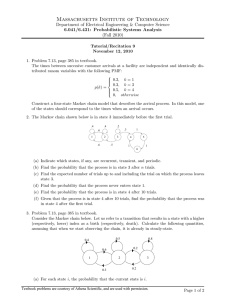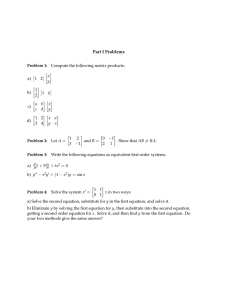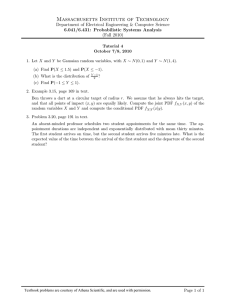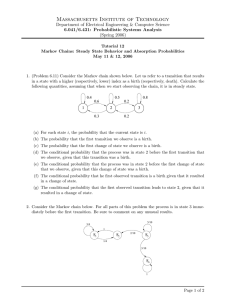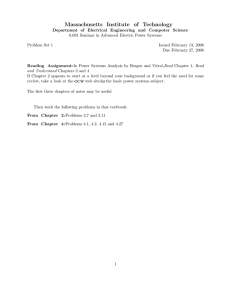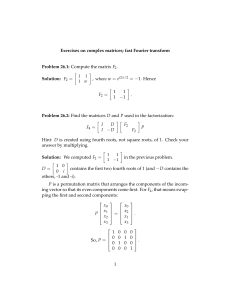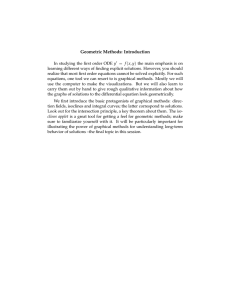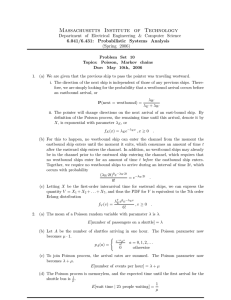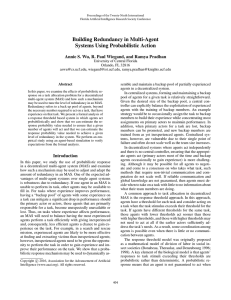Massachusetts Institute of Technology
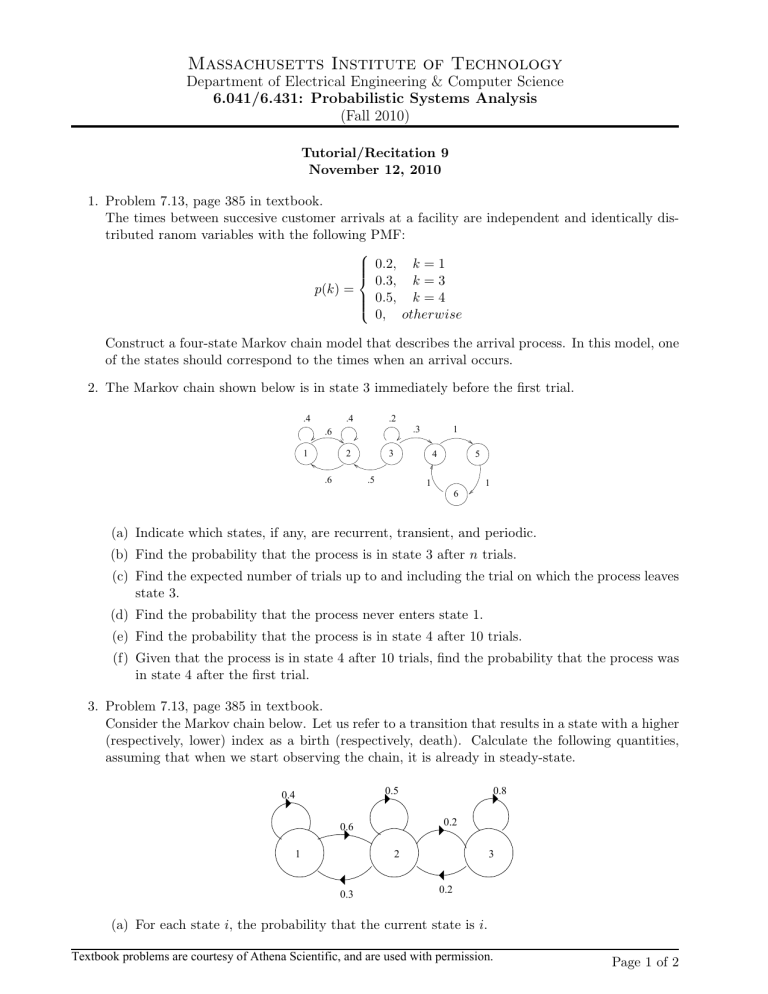
Massachusetts Institute of Technology
Department of Electrical Engineering & Computer Science
6.041/6.431: Probabilistic Systems Analysis
(Fall 2010)
Tutorial/Recitation 9
November 12, 2010
1. Problem 7.13, page 385 in textbook.
The times between succesive customer arrivals at a facility are independent and identically dis tributed ranom variables with the following PMF:
⎧
⎪
⎪
⎪
⎨ p ( k ) =
⎪
⎪
⎪
⎩
0 .
2 ,
0 .
3 , k k
=
=
1
3
0 .
5 , k = 4
0 , otherwise
Construct a four-state Markov chain model that describes the arrival process. In this model, one of the states should correspond to the times when an arrival occurs.
2. The Markov chain shown below is in state 3 immediately before the first trial.
.4
.6
.4
1 2
.6 .5
.2
.3
3 4
1
5
1
6
1
(a) Indicate which states, if any, are recurrent, transient, and periodic.
(b) Find the probability that the process is in state 3 after n trials.
(c) Find the expected number of trials up to and including the trial on which the process leaves state 3.
(d) Find the probability that the process never enters state 1.
(e) Find the probability that the process is in state 4 after 10 trials.
(f) Given that the process is in state 4 after 10 trials, find the probability that the process was in state 4 after the first trial.
3. Problem 7.13, page 385 in textbook.
Consider the Markov chain below. Let us refer to a transition that results in a state with a higher
(respectively, lower) index as a birth (respectively, death). Calculate the following quantities, assuming that when we start observing the chain, it is already in steady-state.
0.4
0.5 0.8
0.6
0.2
1 2 3
0.3
0.2
(a) For each state i , the probability that the current state is i .
Textbook problems are courtesy of Athena Scientific, and are used with permission.
Page 1 of 2
Massachusetts Institute of Technology
Department of Electrical Engineering & Computer Science
6.041/6.431: Probabilistic Systems Analysis
(Fall 2010)
(b) The probability that the first transition we observe is a birth.
(c) The probability that the first change of state we observe is a birth.
(d) The conditional probability that the process was in state 2 before the first transition that we observe, given that this transition was a birth.
(e) The conditional probability that the process was in state 2 before the first change of state that we observe, given that this change of state was a birth.
(f) The conditional probability that the first observed transition is a birth given that it resulted in a change of state.
(g) The conditional probability that the first observed transition leads to state 2, given that it resulted in a change of state.
Textbook problems are courtesy of Athena Scientific, and are used with permission.
Page 2 of 2
MIT OpenCourseWare http://ocw.mit.edu
6.041 / 6.431 Probabilistic Systems Analysis and Applied Probability
Fall 2010
For information about citing these materials or our Terms of Use, visit: http://ocw.mit.edu/terms .
